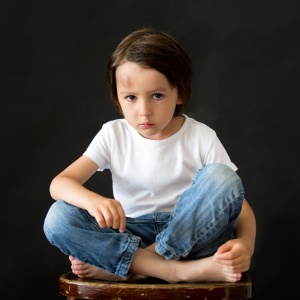A Bump or Abuse? Differentiating Between Types of Injury

No matter how stringent your school’s health and safety procedures are, children are destined to bruise an elbow or graze a knee at some point during school life. Sporting injuries such as this are commonplace and only a concern if further treatment is required.
Physical abuse, on the other hand, is harder to spot. Differentiating between an accidental fall and an intentional attack is something all school staff must be able to handle. Safeguarding and child protection training can prove invaluable in these circumstances, helping teachers and teaching aids expertly assess the risks involved.
Spotting the Signs of a Non-Accidental Injury
Cuts and bruises can appear in many places on a child’s body. Common areas include the knees, elbows, shins and forehead. These locations tend to break a child’s fall when they are involved in a collision or trip, indicating that the trauma was unintentional.
However, these marks can also appear in other locations. Softer regions such as the abdomen, thighs, buttocks and neck can all experience bruising and lacerations. While injuries to these parts can occur naturally, they are far more likely to be caused by intentional brute force.
Another common indication of physical abuse is the shape and size of these marks. Many take on the form of the object the abuser used. For example, a handprint may be noticeable on the child’s skin or the linear bruising of a stick or cane might spark initial concern. If these marks don’t appear to be healing over time, then it could be a sign of sustained abuse.
Other side effects may also accompany these bruises. Heavy trauma often leads to further physical symptoms: hair loss, haematomas and stress fractures being prominent examples. Mental side effects are also common with abused children, developing conditions such as depression, eating disorders and insomnia. Safeguarding training can help education staff identify all these physical and behavioural changes.
Safeguarding Against Further Incidents of Abuse
If you suspect a child in your care has been subject to abuse, then you need to know how to manage it delicately. Identifying the physical signs is a start, but preventing further harm is paramount. Often, children will be too traumatised to open up to you directly. Safeguarding training can provide you with a foundation for tackling each individual situation.
Child protection training allows education staff to remain confident in their approach to sensitive issues. During a safeguarding course, you will be guided through each step of the child protection process, in order to understand the correct way to identify and report abuse. Knowing exactly which child protection procedures to undertake can ensure that both you and the child remain safe from the abuser.
Trying to defuse a situation without the appropriate safeguarding training can often exacerbate the matter. While you want to do everything you can to remove the child from danger, acting rashly can make prosecution more difficult. As long as you follow the steps in the training modules, you will be equipped to deal with any incidents of abuse. Once the issue has been handed over to an official authority, charges can be pressed swiftly.
In all incidents of abuse, it’s important to know the facts. If a child is reluctant to open up to you, then try and ask them about the situation in a friendly, conversational manner. Assess all suspicious marks to the best of your ability, without pushing the victim to reveal them to you. Safeguarding training will provide assurances that your actions are in keeping with safety protocol and ensure the issue is handled with the utmost sensitivity.
